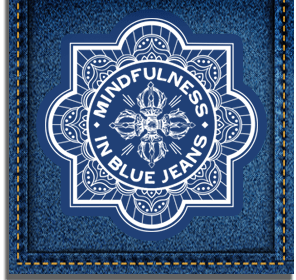Staying on track takes practice.
During a recent conversation with someone, I asked a seemingly benign question … and received what felt like an ambush of sarcasm ridiculing my query.
I know – stop the presses, right? But that’s not the interesting part.
What’s interesting is watching the train-wreck of thoughts that often unfold from that kind of experience.
First, the initial surprise registers. “Wait, what just happened?”

It seems like anger immediately follows, but anger is merely the hard shell that quickly surrounds fear. (With practice, our awareness becomes sharp enough to spot that soft chewy center of vulnerability BEFORE the protective outer layer forms.) “They said what? Danger! Threat! Fire in the hole!”
Finally, anger swoops in to “help” the fear, setting up a symbiotic dialogue that calcifies our sense of identity as the starring player in this deepening storyline:
Anger: “Did you say you’re under attack? Oh, trust me, I’ll finish what they dared to start.”
Fear: “But did you hear what they said to me? Can they do that?”
A: “Hell NO they can’t.”
F: “But what if … what if they’re right? Did I screw up?”
A: “They are NOT right. YOU are right. Here, I’ll replay the whole thing to you over and over, showing you each time exactly why you’re right.”
F: “But even if I’m right, I can’t be seen as someone that people can just talk to like that! How do I stop that?”
Of course, what we actually do next – based on anger’s next response – varies from person to person (and varies across time for any one person). Typically, we direct that roiling energy as an outward counter-strike or an inward simmering rage. In both cases, the well-intentioned but dysfunctional dialogue often continues for minutes, days, or even years. That’s a long-ass train wreck!A key turning point in my practice was noticing the real question underlying this frantic inner conversation:
“What do I have to do to regain the comfortable sense of self I had before this perceived threat to it?” As soon as I saw that more clearly, a second question finally had a chance to arise in the resulting space: “if the roles had been reversed in this situation, what would I have said differently?”
That’s when things broke open.
I saw myself fielding the original conversational question in a congenial way, juxtaposed against the reaction that I felt I received. And I realized that the more general question I was asking myself was this: “would I have handled this question or situation in tune with my inner moral compass?” My answer was an immediate “yes.”
Suddenly things became super-clear, at a felt, experiential level. What else could I possibly want beyond knowing that I’d have acted skillfully? What WAS there to be done beyond that? Simply put: nothing. With a wry smile, I felt that comfortable sense of self return … only to notice that I no longer found it necessary.
Yet another freeing paradox of insight meditation: when I finally found a sense of self that couldn’t be threatened, I discovered that I didn’t need it anyway.
Ultimately, we’re each responsible only for ourselves. What “they” say to us doesn’t actually reflect on us; it reflects where they are on their path. We can wish them well or ill (and that DOES reflect on us), but that’s about as far as it goes. The only question that we really need to ask is “where am I on my path?” The answer we receive gives us something we can ACTUALLY work on … and then let go.
Now that’s keeping things on track.
Questions? Thoughts? Ready to break things open? Drop me a line or set up a session to get on track.
